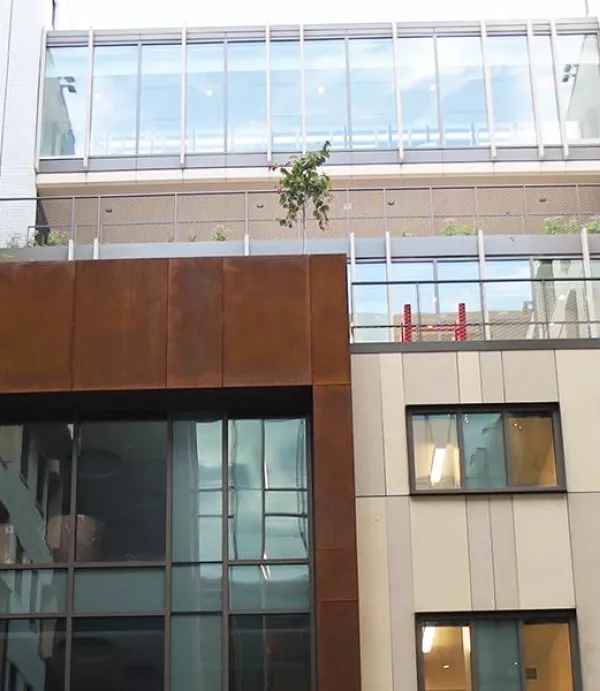The Value of Health and Wellness in Green Buildings
September 30, 2018

Historically, eco-labeling in the real estate sector via LEED and Energy Star certified buildings has resulted in higher rental and sales premiums. These programs have succeeded in shaping the decisions of prospective buyers and occupiers because they allow for the comparison of buildings based on benchmarks.
However, “green building” design and construction is always changing alongside building codes and regulations. With the rise of EPA and OSHA policies in the early 1990’s requiring lead and asbestos removal and abatement, more regulatory focus was devoted to overall material transparency to protect human health. As a result, in today’s design and construction industry the term “Health and Wellness” became a catchphrase to encompass the newest eco-labels for buildings: the WELL Building Standard and Fitwel Certification. These new health-focused certifications have stimulated new demand for premium, sustainable commercial and multi-family residential buildings.
Studies show that there are a range of benefits for owners and occupiers of “green buildings”. Often these buildings are eligible for subsidies and tax benefits from cities and counties seeking to incentivize a larger supply of certified buildings. Building O+M related to green building policies can also reduce operating costs associated with energy and other utility savings.
Earlier this summer, I spoke on a panel about implementations of health in buildings at the National Institutes of Health, in Bethesda, Maryland. With an audience made up of research scientists, architects, and building managers, our panel discussion revealed that there is both institutional and commercial momentum for the adoption of human-centered, healthy building strategies that are certifiable and comparable across building portfolios. As more research into this field of building science continues to emerge, owners of buildings certified with “health and wellness” eco-labels can maximize potential rental uplifts and reduce holding costs due to lower vacancy rates and higher tenant retention.
Occupiers of green and healthy buildings report improved productivity due to lower staff turnover, fewer employee sick days, and employers are seeing a decrease in employee “presenteeism” – which is good because it reduces the problem of workers being on the job, but because of illness or other medical conditions, they are not fully productive. In multi-tenant commercial buildings, tenants are willing to pay the higher rental and sales premiums because in addition to the productivity benefits, they also want to reduce their interior fit-out investment depreciation by retaining best-in-class technologies, reduce their regulatory risks, and reduce their risks of growing higher health insurance premiums associated with employee health issues growing due to poor indoor air quality.
Overall, the design and construction innovations prompted by these newer health-focused certifications are beginning to drive the sustainability industry toward even greater market transformation. At Clark, we take pride being ranked as one of the nation's largest general builders. Our portfolio includes 412 LEED registered projects delivered or underway totaling more than 104 million square feet and valued at more than $33 billion, and we are excited to also be a builder of healthier, greener buildings.
Stats/information:
- 90% - the amount of time that humans spend indoors (EPA 1987 study)
- 55% - the amount of firms that rate greater health and well-being as their top reasons for building green (up from only 29% in 2008)
- Increased employee health and productivity – the two most important reasons to build green in every international market, according to a recent McGraw-Hill survey (World Green Building Trends: Business Benefits Driving New and Retrofit Market Opportunities in over 60 Countries, McGraw-Hill. 2013)
- 350+ - number of Clark staff with sustainability credentials, including WELL AP and Fitwel Ambassadors
- WELL Building Standard – a design evaluation system for advancing health and well-being of building occupants with a flexible framework and holistic approach to improving employee productivity, engagement, and retention.
- Fitwel – the recent result of a partnership between the Centers for Disease Control and Prevention and the General Services Administration, Fitwel targets building optimization to support occupant health and wellness…and with a starting cost of only $500, it comes with a nice price tag.


